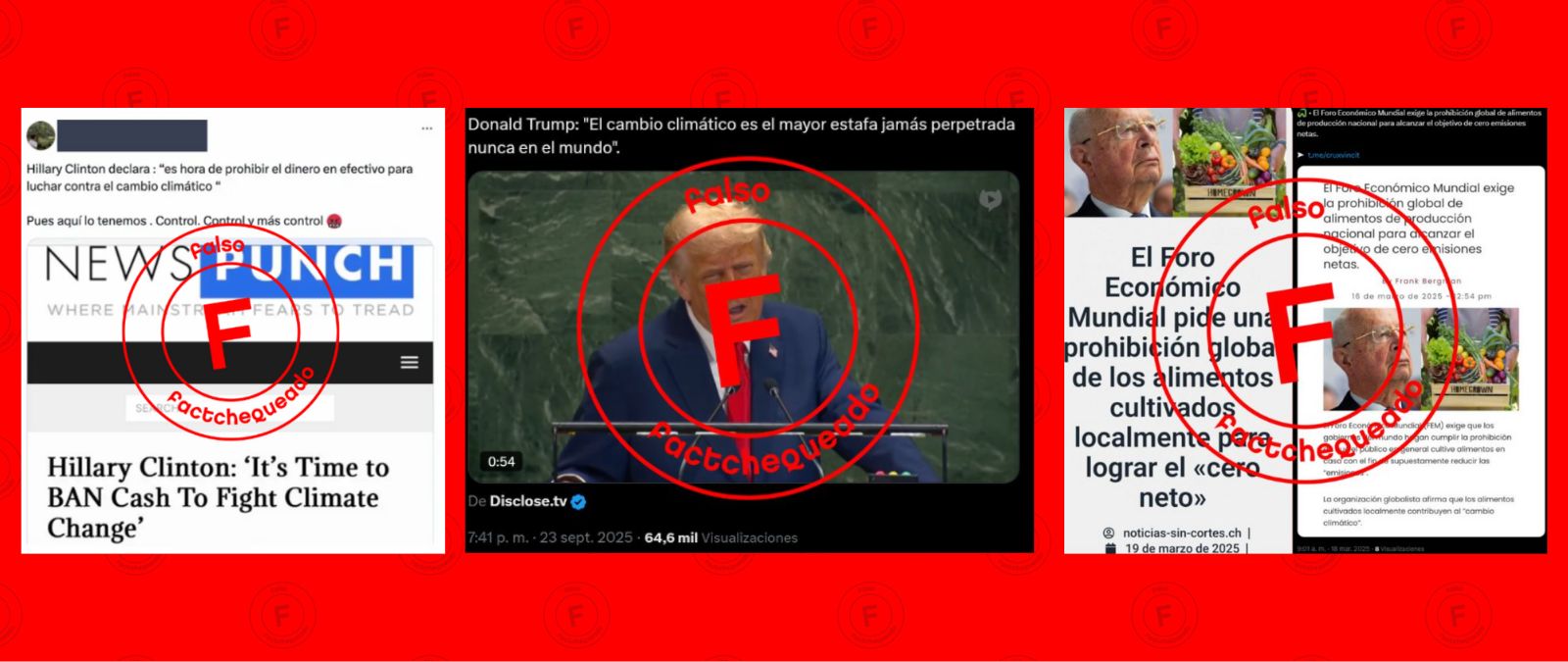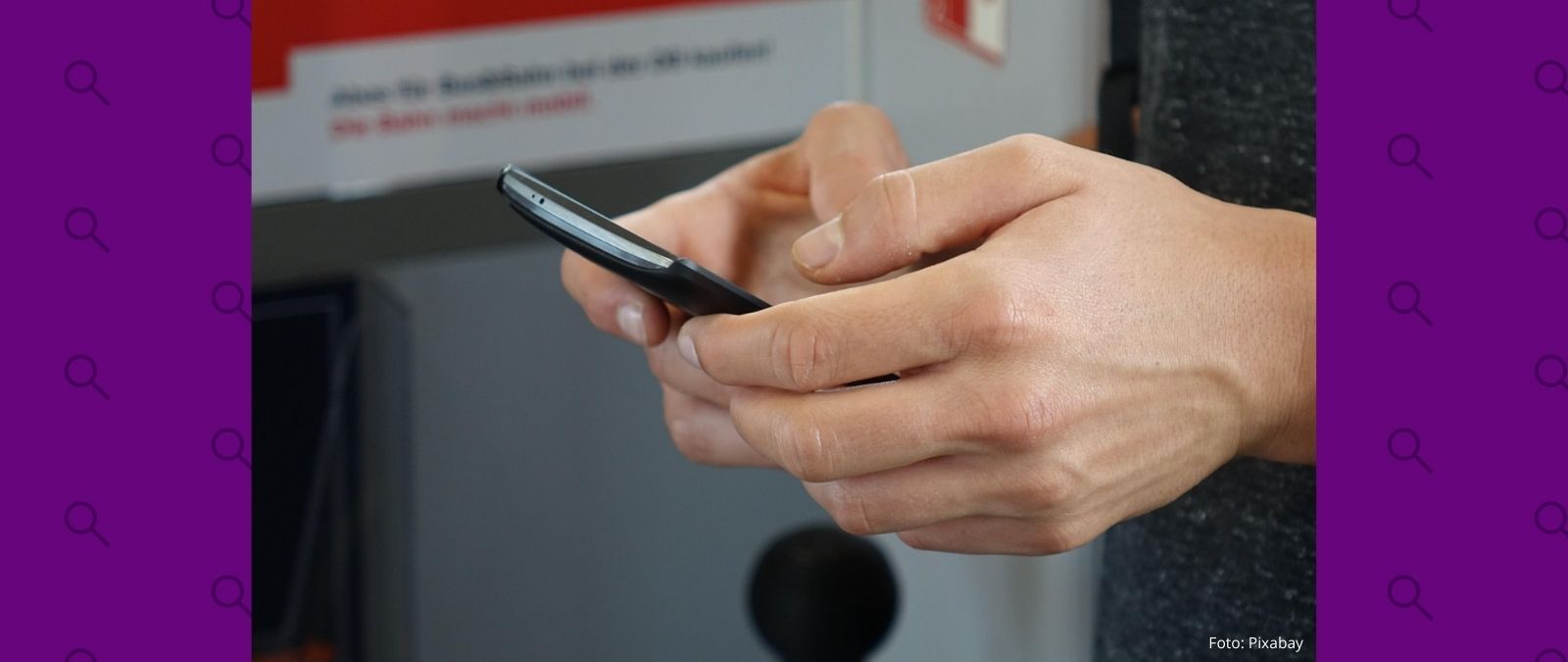As the U.S. awaits Donald Trump's return to the White House, uncertainty prevails with respect to his statements about mass deportations, cuts to social services, and drastic modifications to education and health policies.
Given the context, it’s no wonder that some members of Hispanic and Latino communities in the country are feeling anxious.
There is evidence — which became clear during the COVID-19 pandemic — that disinformation is designed to take advantage of our emotions. It also tends to spread farther and more rapidly during times of change and uncertainty. When people have questions and there are gaps in information, the disinformers (those who profit from lies), take advantage, “magically” putting forth what appear often to be simple answers or solutions.
Keeping this in mind, here are some tips to protect yourself from falling for or sharing false or alarmist content.
Transparency
For weeks, we at Factchequeado received content and questions from our media partners and community members via our WhatsApp chatbot about possible measures the Trump administration might adopt when he takes office on January 20, 2025.
While we would love to answer all these questions and, hopefully, help allay fears, one of the pillars of fact-checking, and journalism as a whole, is to be transparent regarding what we know and what we don’t.
In the report, How to Communicate Uncertainty, published in 2020 by Chequeado, Full Fact and Africa Check, the point below is relevant to today’s context:
"As fact-checkers, we encourage individuals and organizations to back up what they say with evidence, and to get their facts right. We help the public make sense of that evidence by summarizing it and providing our judgement on where the weight of evidence lies. That involves a careful balance of being explicit about uncertainty and nuance where they exist, while also being clear where we think the evidence points in a particular direction.
And yet, while acknowledging uncertainty is key to trustworthy fact-checking, the way in which we communicate it also matters. It affects what the public understands, and it shapes trust in numbers and communicators themselves."
Insights
The following are insights into communicating information accurately in times of uncertainty, pulled from the study cited above which primarily analyzed Anglo-American literature:
Format is key. The formats used to communicate information related to uncertainty directly affect what people can understand and how they interpret that information.
Humans have an inherent need to know information and are averse to ambiguity. Subjects studied by U.S. and Western European researchers over the years have shared a preference for betting on known outcomes, and an aversion to ambiguity. There are limits to what we know, however. Some level of uncertainty is inevitable, due to limitations on our ability to measure data based on past information, or that which doesn’t yet exist. Another simple reality is that any prediction about the future is made on the basis of a probability.
Words are easier to understand than numbers, but they are less precise. Certain calculations, specialized jargon, or large quantities such as “billion,” can be difficult to conceptualize, and may turn some members of the public off when it comes to communicating numbers and data.
It is necessary to be explicit about ranges to communicate uncertainty clearly. Verbal expressions of quantity also have their limitations. Simply adding a word like “estimated” is not enough to help people understand a specific number, such as unemployment growth or crime decline, because it encompasses a range of possible scenarios.
When communicating probabilities of outcomes, inexact terms such as “likely” can be interpreted in different ways. For some, it may represent a 60% likelihood; for others, 30%.
The public tends to cumulate verbal expressions of probability. When looking at what’s happening currently with U.S. media and social media, when a consumer reads from various sources that something is “likely,” it leads some to interpret erroneously that something is “very likely.” Just because you read several times that there will be massive deportations, or that the Department of Education will be shut down, that doesn’t increase the likelihood that these events will occur. At the same time, the possibility that these events will take place cannot be ruled out either.
As anthropologist and researcher Dora-Olivia Vicol explains in the report, a series of experiments found that verbal expressions of uncertainty (phrases such as “the figures could be higher or lower”) slightly decreased readers' confidence in the figures in question and in the journalists who reported them.
There is also evidence that trust is lowered when an outcome turns out to be at odds with the probability expressed in a “certain” prediction. In short, the ways in which uncertainty is communicated affect the public's confidence in the information and in the professionals who share it.
However, these limitations can be mitigated. Being specific about our uncertainty, what we know, and whether there is any amount of disagreement about that information allows us as journalists to maintain transparency without shrouding the entire message in doubt.
Recommendations
The following are recommendations to communicate information in times of uncertainty:
Be transparent
Be specific about what exactly is uncertain
Indicate uncertainty around existing data using numerical ranges in brackets, after the main value
Take care when using large numbers and jargon
Explore how we can help members of the public get better at processing uncertainty
Factchequeado is a fact-checking media organization combating mis- and disinformation in Spanish across the U.S. by building a community of partners nationwide. Would you like to get involved? Join the effort by sending content you would like verified to Factchequado’s WhatsApp: +16468736087 or to factchequeado.com/whatsapp.
This article was originally published by Factchequeado and IJNet in Spanish. It was translated to English by journalist Natalie Van Hoozer.










